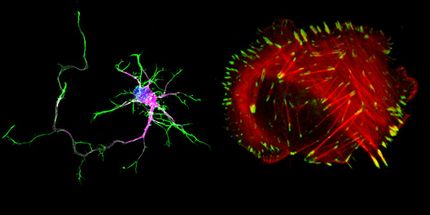New Diagnostic Device has the Potential to Save at least 375.000 Lives per Year
Health Care Systems worldwide would save up to $ 20 billion dollars with sepsis diagnosis alone.
Advertisement
"Anagnostics will revolutionize the diagnostic market and provide physicians with decision foundations of matchless quality", explains Dr Bernhard Ronacher, the company's CTO. After an adventurous start in the scientist's own house's workshop and three years of exhausting research and development, Ronacher is proud of Anagnostics' achievements: "The desktop device is easy to use and above all affordable. It is perfect for wide-spread application in hospitals, at physicians or in industry. Our next generation biochips will replace Realtime-PCR (Polymerase Chain Reaction), and take shares of other molecular diagnostic techniques. ", adds Ronacher.
750.000 victims of sepsis (blood poisoning) annually The device is widely applicable, for diagnosis of cancer, autoimmune diseases (allergy, rheumatism...), infections, for food testing and Homeland Security.
The high impact is illustrated with the example of sepsis. 750.000 people die from a contracted acute hospital infection (severe sepsis) each year - these are more people than are killed by breast cancer and colon cancer combined. Leading physicians are sure that the death toll could at least be halved, if a broad, fast and accurate diagnosis is provided - requests state of the art equipment cannot satisfy. So, health care systems have to spend more than $20 billion annually on sepsis.
Anagnostics collaborates closely with industrial and scientific partners to design and market such high impact diagnostic kits for the Anagnostics' platform. Thomas Marlovits, Ph.D., a former lecturer of the University of Yale, who has just joined Josef Penninger's Institute for Molecular Biotechnology (IMBA) in Vienna concludes, "This technology supersedes state of the art PCR, Realtime-PCR and diagnostic microarray systems and hence enables significant improvements for human health."
Broad launch in first half of 2006
"We have still some work to do", states Christoph Reschreiter, CEO, "but we passed all critical milestones successfully. Now we have to set up batch production. Compared to the critical R&D of the last years, that's a piece of cake." The US market entry is scheduled for the second quarter 2006. "For the global roll-out we do not rule out alliances with strong partners. Our clear goal is to close ranks with leading global diagnostic companies", concludes Reschreiter.


























































